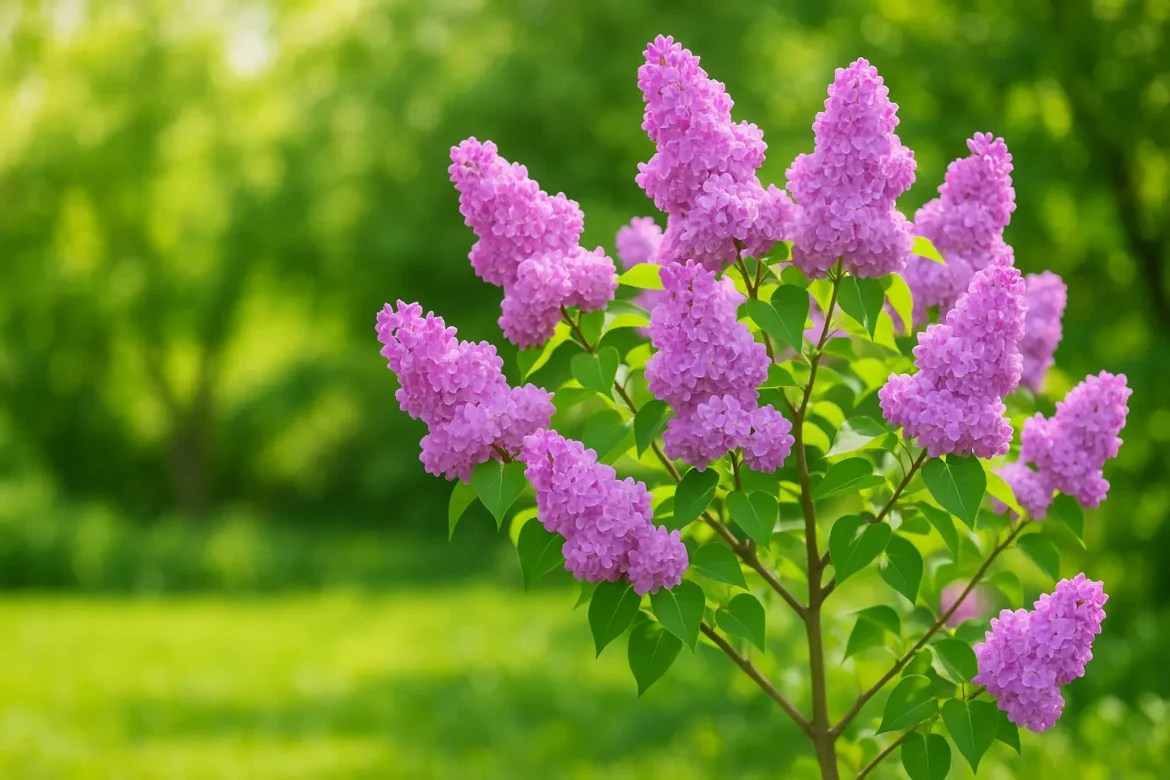Lilac Bush Powdery Mildew: A Common Problem, But Don’t Panic!
Lilacs are beautiful shrubs that add a touch of color and fragrance to any garden. However, they can also be susceptible to powdery mildew, a common fungal disease that can cause unsightly white or gray spots on the leaves. While powdery mildew can weaken lilac bushes over time, it’s not usually fatal. With the right care and treatment, you can eliminate or reduce the effects of powdery mildew and keep your lilacs healthy and beautiful.
What is Powdery Mildew?
Powdery mildew is a fungal disease that affects a wide range of plants, including lilacs. It is caused by several different species of fungus that thrive in warm, humid conditions. The fungus forms a white or gray powdery coating on the leaves of the plant, which can spread to the stems and flowers if conditions are right.
Symptoms of Powdery Mildew on Lilacs
The most common symptom of powdery mildew on lilacs is a white or gray powdery coating on the leaves. This coating can also spread to the stems and flowers. Other symptoms of powdery mildew include:
- Cupping or crinkling of leaves
- Distortion of leaves
- Stunted growth
- Reduced flowering
How to Eliminate Powdery Mildew on Lilac Bushes
There are several things you can do to eliminate or reduce the effects of powdery mildew on lilac bushes.
- Improve air circulation: Powdery mildew thrives in still, humid air. Improving air circulation around your lilac bushes can help to prevent and control the disease. Thinning out the branches of your lilac bush and removing any nearby plants that may be blocking airflow can help to improve circulation.
- Remove plant debris: Powdery mildew spores can overwinter in dead leaves and other plant debris. Cleaning up and removing plant debris from around your lilac bushes can help to prevent reinfection in the spring.
- Reduce fertilizer: Powdery mildew fungus loves soft, tender new growth. Reducing or withholding fertilizer can help to slow down new growth and make your lilac bush less susceptible to the disease.
- Use organic treatments: There are a number of organic treatments that can be effective against powdery mildew on lilacs. These include:
- Baking soda: Mix 1 tablespoon of baking soda with 1 gallon of water and spray on your lilac bushes.
- Neem oil: Neem oil is a natural fungicide that can be effective against powdery mildew. Mix 1 tablespoon of neem oil with 1 gallon of water and spray on your lilac bushes.
- Hydrogen peroxide: Hydrogen peroxide is another natural fungicide that can be effective against powdery mildew. Mix 1 part hydrogen peroxide with 9 parts water and spray on your lilac bushes.
- Apple cider vinegar: Apple cider vinegar is a natural acid that can help to kill powdery mildew spores. Mix 1 part apple cider vinegar with 9 parts water and spray on your lilac bushes.
- Milk: Milk contains proteins that can help to inhibit the growth of powdery mildew fungus. Mix 1 part milk with 9 parts water and spray on your lilac bushes.
- Chamomile tea: Chamomile tea contains compounds that have antifungal properties. Brew a pot of chamomile tea and spray on your lilac bushes.
- Garlic spray: Garlic spray is a natural fungicide that can be effective against powdery mildew. Crush a few cloves of garlic and mix with 1 gallon of water. Let the mixture sit for 24 hours, then strain and spray on your lilac bushes.
How to Prevent Powdery Mildew on Lilac Bushes
In addition to treating powdery mildew, there are a number of things you can do to prevent it from occurring in the first place.
- Choose resistant varieties: There are some varieties of lilacs that are more resistant to powdery mildew than others. When choosing a lilac bush for your garden, ask your local nursery which varieties are best suited to your climate and growing conditions.
- Water your lilacs correctly: Water your lilac bushes deeply and infrequently, rather than shallowly and frequently. This will help to encourage deep roots and make your lilac bush more resistant to drought stress. Drought-stressed lilac bushes are more susceptible to powdery mildew.
- Avoid over-fertilizing: Over-fertilizing your lilac bush can lead to soft, tender new growth that is more susceptible to powdery mildew. Fertilize your lilac bush according to the instructions on the fertilizer package.
- Keep your garden clean: Remove any dead leaves or other plant debris from around your lilac bushes. This will help to prevent the spread of powdery mildew spores.
Conclusion
Powdery mildew is a common problem on lilac bushes, but it can be eliminated or reduced with the right care and treatment. By following the tips in this article, you can keep your lilac bushes healthy and beautiful for years to come.
